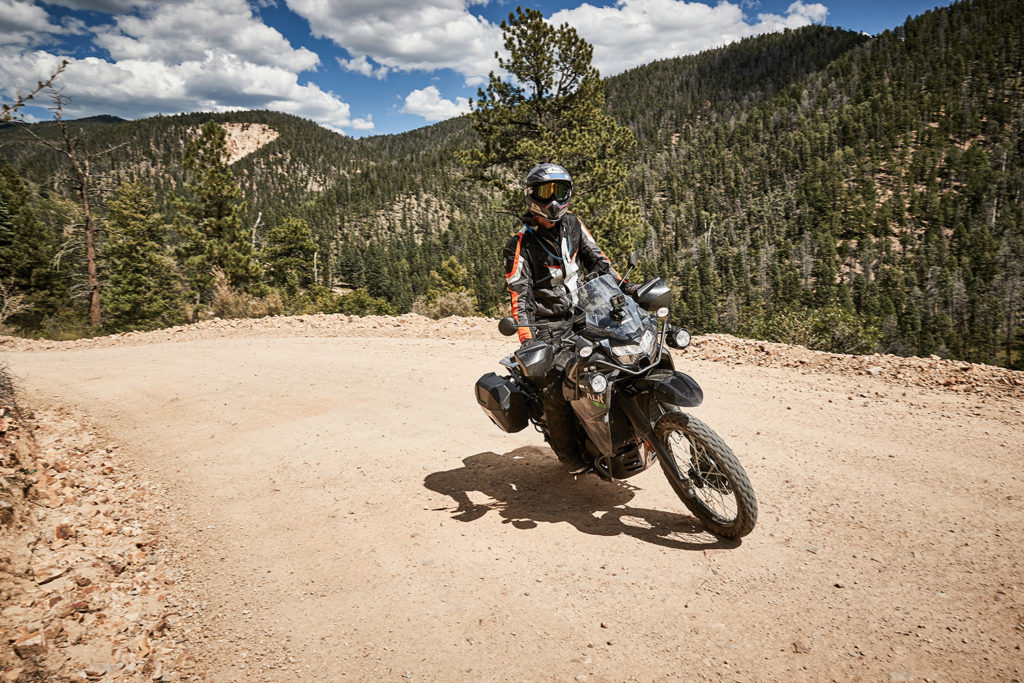
The word legend is overused, especially by cliché-loving motojournalists, but when it comes to the world of adventure riding, the Kawasaki KLR650 can lay a credible claim to the title. With its second major update since being introduced in 1987, the 2022 Kawasaki KLR650 continues the model’s long history as an affordable, dependable adventure bike.
First released as the KLR600 in 1984, the model was upgraded to a 650 in 1987. The high fender, tall stance, and elevated ground clearance left no doubt as to its dual on-and off-road purpose. Powered by a single-cylinder, liquid-cooled, DOHC, 4-valve engine, with fueling managed by a Keihin carburetor, the KLR also had a 5-speed transmission and front disc brake. Cutting-edge stuff for the time, and the bike quickly gained a reputation for steady reliability and go-anywhere capability.
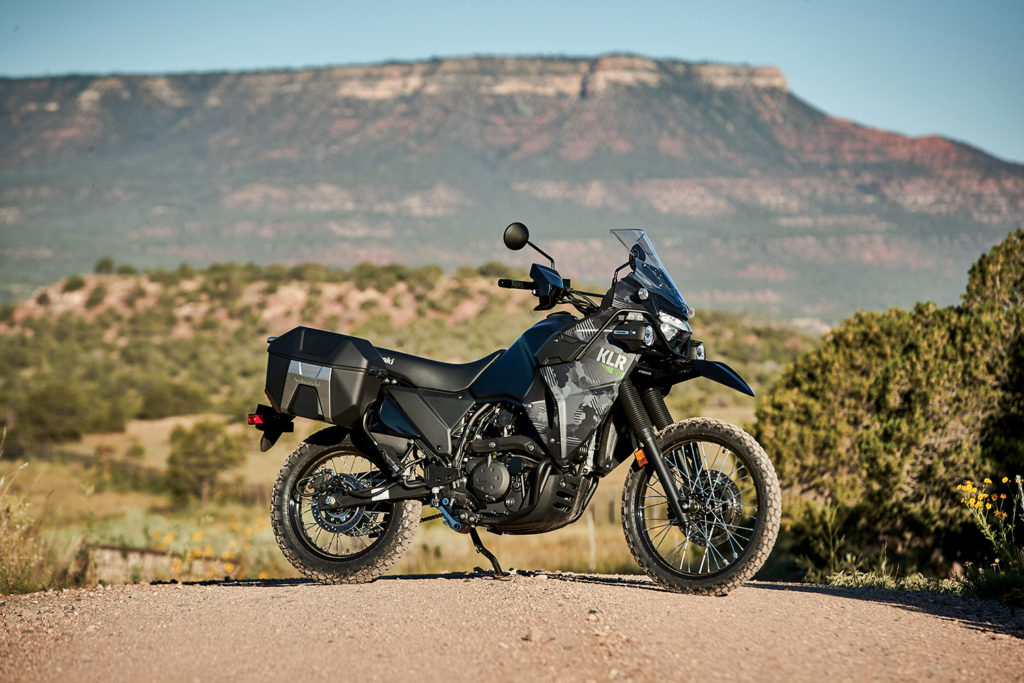
Almost nothing changed for two decades, which gives some indication as to the KLR’s intrinsic qualities and its popularity. You don’t mess with success, and if it ain’t broke, don’t fix it. Even after the first major update in 2008, which included a longer fork, a new swingarm, better brake calipers, and a redesigned fairing, the Keihin carburetor and just about everything else remained unchanged. But the world has moved on, and as with many long-in-the-tooth motorcycles, satisfying the latest regulations is a major driving factor behind the updates to the new model.
So, what has Kawasaki done to the KLR? To calm the nerves of the faithful, I’ll start with what hasn’t changed. The short answer: most of it. Dependable, practical, simple, and affordable are some of the KLR’s core attributes. For 2022, there are still no rider modes, throttle-by-wire, TFT display, or other complexities (and related costs), and the base model is still priced well under $7,000. The KLR has a reputation for field reliability, where everything can be fixed with a wrench and a rock; even the Marine Corps has a fleet modified to run on diesel. The new KLR stays true to that formula.
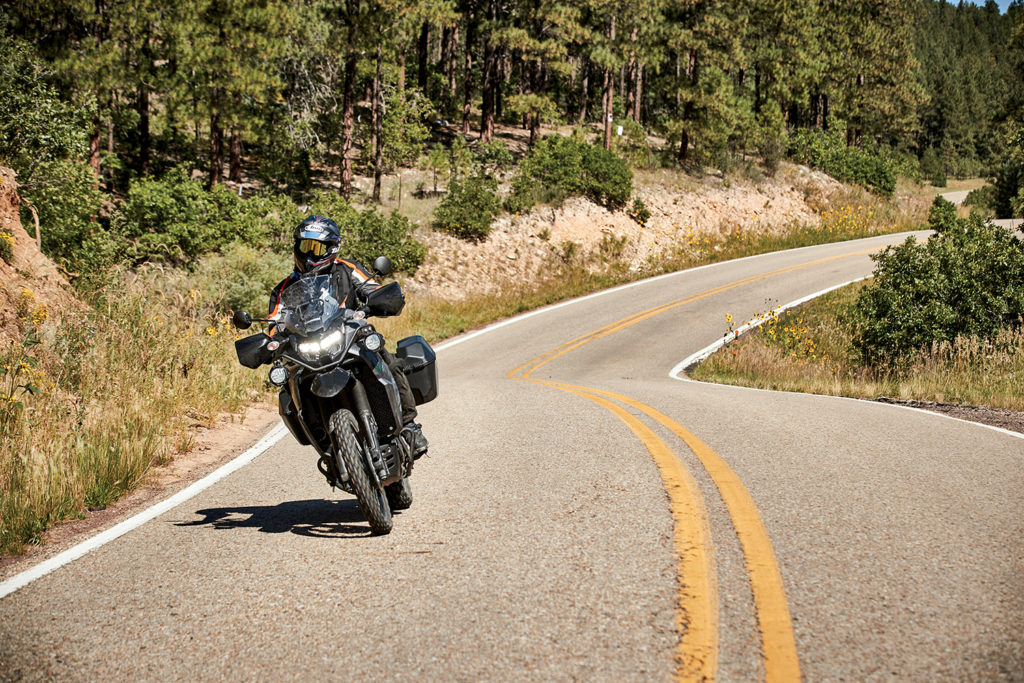
Nevertheless, anyone who has tried to get a carburetor serviced lately will know that it’s a specialized skill in dwindling supply, and many will welcome the belated switch to fuel injection. Yes, the old Keihin carb was rock-solid, but EFI has proven its worth on motorcycles for decades. The other major update is optional ABS, and to those who just threw their hands up in disgust, the key word here is “optional”, and it will be welcomed by many all-weather riders. There’s also a long list of tweaks and enhancements to this new KLR, all of which should appeal to fans new and old. It has been made stronger and more reliable, and offers more comfort, wind protection, load-carrying ability, and versatility.
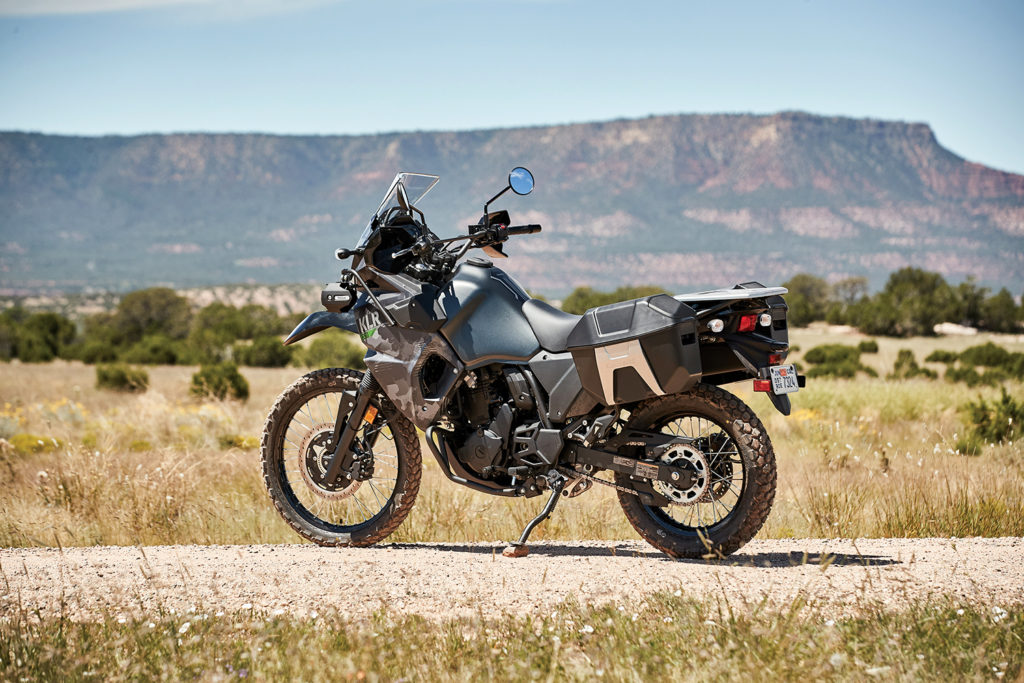
The old thumper has been updated to improve efficiency and meet the latest regulatory requirements, at the heart of which lies the new EFI system. Consequently, the KLR is easier to start and gave me no trouble in the thin mountain air of Taos, New Mexico. By making the subframe an integrated part of the main frame, the entire chassis is stiffer, which improves stability and increases load capacity. Stability also gets a boost from more rake (30 degrees, up from 28), more trail (4.7 inches, up from 4.4), a 1.2-inch-longer swingarm, and a longer wheelbase (60.6 inches, up from 58.3), and key load-bearing areas have all been strengthened. The front suspension has been adjusted to accommodate frame updates and a 28-pound increase in curb weight, while the rear shock is now adjustable for rebound in addition to spring preload.
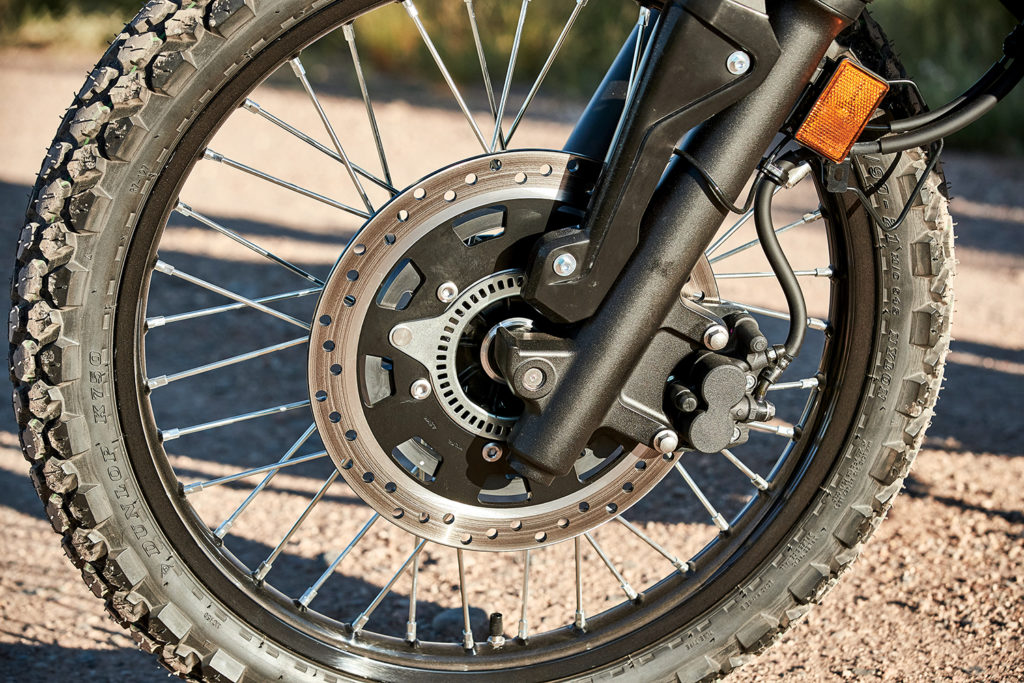
A larger 300mm front disc has increased braking power, and a thicker rear disc is less prone to fade on steep descents. ABS is a $300 upgrade. Kawasaki did a good job tuning the ABS to suit the dual-sport nature of the KLR, but it can’t be turned off. Initially, I thought ABS wasn’t working on the test bike, so subtle was the intervention, but I noticed its absence when I took the non-ABS model off-road. Given the price, I expect a lot of buyers will opt for it; I know I would.
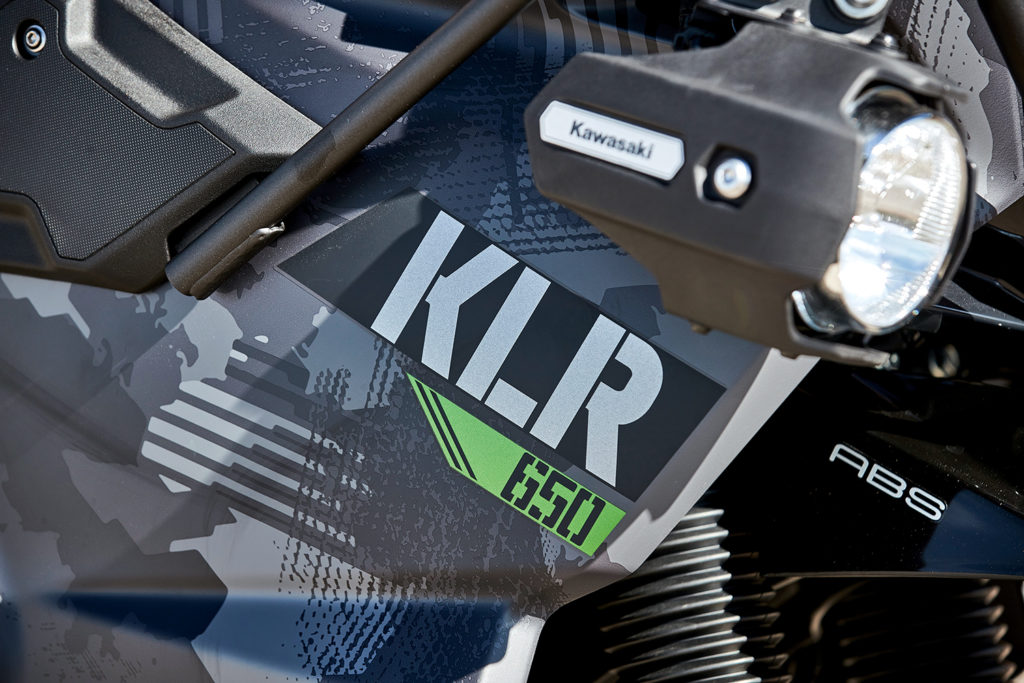
Both the battery and generator have been updated to provide more power for accessories such as auxiliary lights and heated grips. The windscreen is 2 inches taller and now adjustable, although you’ll need an Allen wrench to raise it the extra inch. A nifty half-inch bar has been added above the dash for mounting accessories, and the updated LCD is clear, easy to read, and now has a fuel gauge. All-round LED lights are now standard, and the Adventure model I tested comes equipped with useful auxiliary lights and crash bars for the cowling and engine, adding to its off-road credentials. The new seat, still a dirtbike-style single unit, has been redesigned to improve comfort, although I wished for more cushion over long distances.
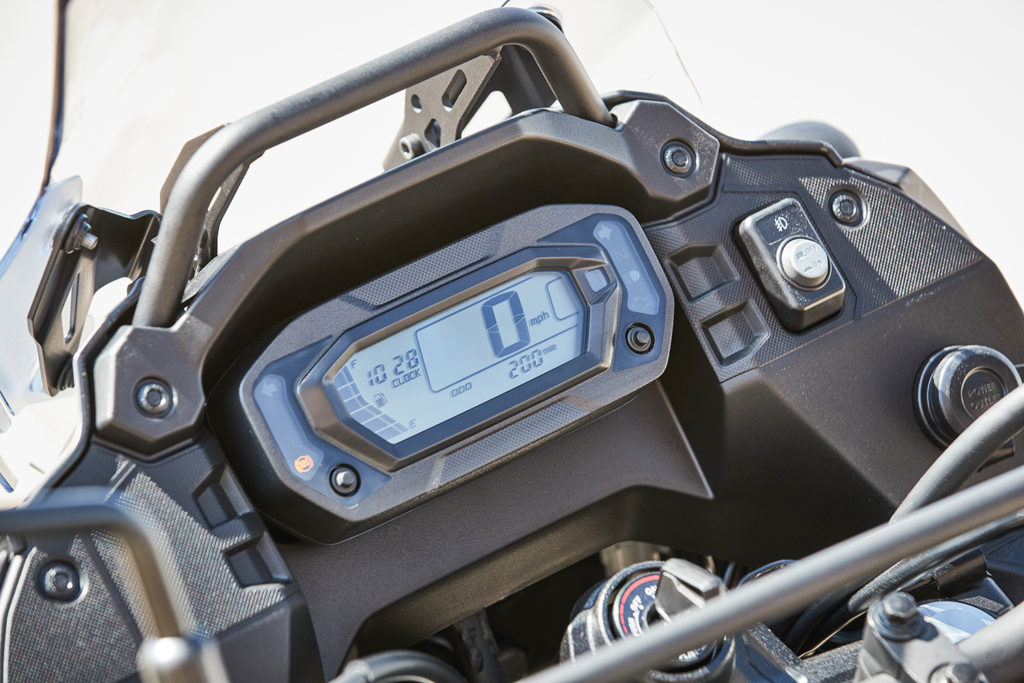
Our test ride began at the RFD-TV Ranch, where the sprawling Rocky Mountains descend into the high New Mexico plains. Pulling onto the highway, the KLR rides like a middleweight Single; that is to say, the pace is leisurely. Kawasaki has done a good job of balancing the old thumper, so there is very little in the way of vibration. Although the KLR is not a highway bike per se, it happily cruises at 75 mph. But at higher speeds, it would really benefit from a 6th gear.
Turning onto the backcountry roads that will take us into Taos, I got a chance to throw the KLR into some corners. At slower speeds, the 21-inch front wheel and tall stance result in a bit of steering flop, but once adjusted to its characteristics, the KLR’s road handling exceeded expectations. The semi-knobby tires squirm a bit on pavement, but the bike is composed when accelerating through tight corners.
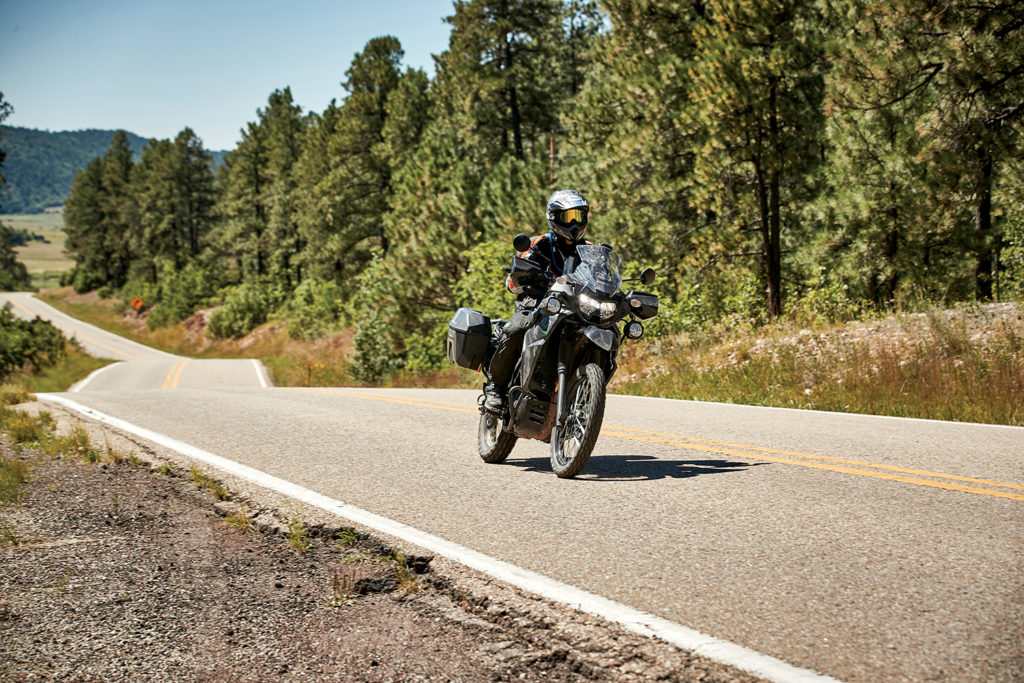
The afternoon took us into the dirt, and another characteristic I had to adjust to is the gear shift position. I couldn’t get my motocross boot under the lever easily, especially when standing on the pegs. Upshifting was a struggle, particularly from 1st to 2nd. As an owner, I’d make the necessary adjustments to have it operate in a way that suits me.
Gear shifting aside, the KLR’s supple suspension comes into its own off-road, and riding the rocky trails is fantastic fun. The new KLR is still equipped with Dunlop K750 tires, a road/trail compromise with an emphasis on compromise. Nonetheless, tractor-like low-end torque enables the KLR to maintain traction in sandy, loose terrain. It’s almost impossible to stall, and the moment I get bogged down, a slip of the clutch is all that’s required to churn my way through.
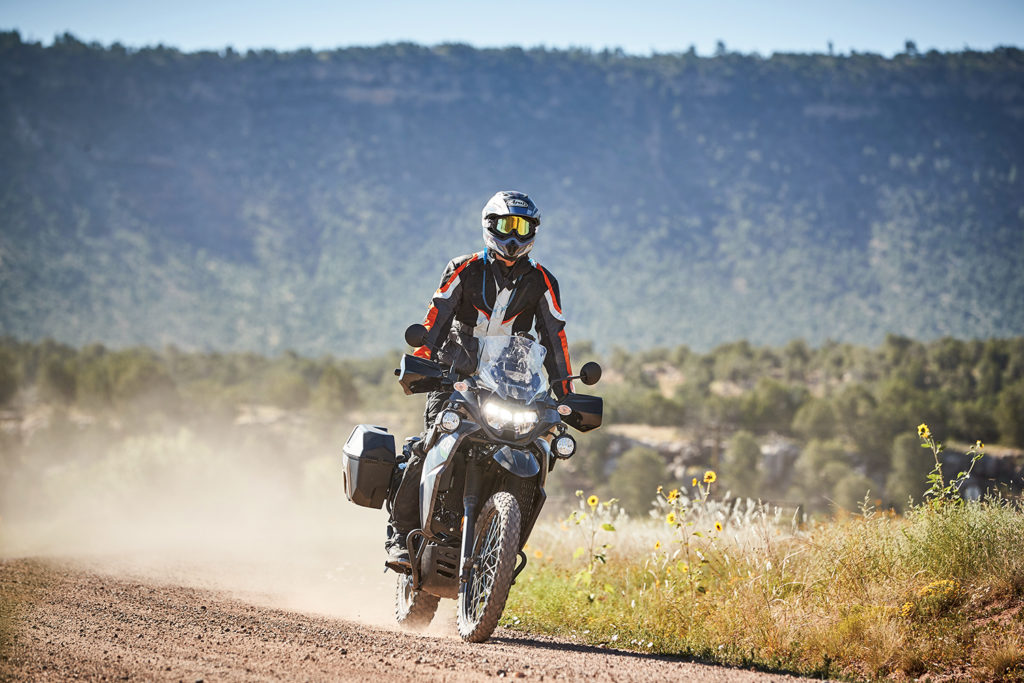
Working our way down from Taos the following day, there were plenty of opportunities to test the KLR on gravel tracks, sandy trails, and the dreaded silt. The silt track might as well have been a road of marbles, and it’s at times like these when even the most experienced riders risk falling off that a lone traveler will be particularly thankful they’re on a simple, relatively lightweight adventure bike. Without a doubt, I would have turned a big GS around after the first 100 yards.
Early the next morning, the KLR now loaded with gear, I set off solo for Arizona. Route 60 rolls across the plain and into the Gila National Forest, where a massive thunderstorm provided an opportunity to test handling in the rain and the waterproofness of the hard saddlebags that come standard on the Adventure model. I was on the non-ABS version, which coped admirably, as did the side bags, which remained bone dry inside.
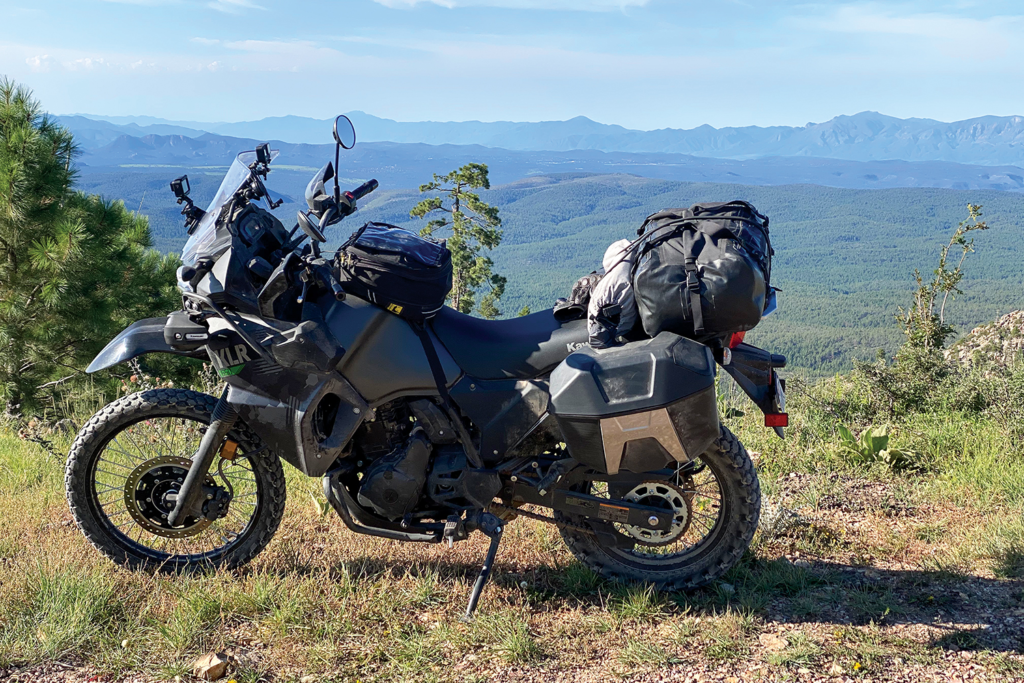
Trails in the Coconino National Forest provided the perfect opportunity to test the loaded KLR. No matter where I’ve ridden in the world, I always seem to end up on tracks like these, with a mix of sand, rubble, and gravel. The seated ergonomics are excellent. My body position is upright with a comfortable bend at the knee and arm, but standing up, the peg position is a little too far forward, bringing the handlebar too close to my body. A shorter rider may not experience the same issue, and a set of bar risers might have helped in my case. Putting that aside, the KLR is a breeze to ride on tracks like these, and even with the old-school tires, it is only the deeper sandy sections that force me to slow down to crawling speeds.
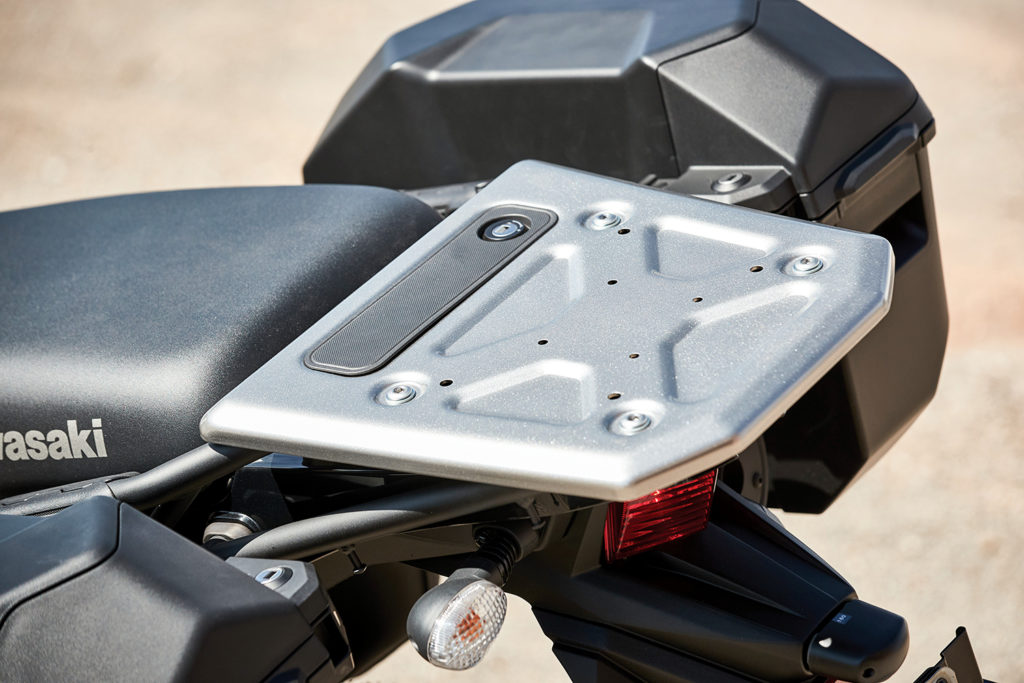
Joshua Tree National Park, my next destination, is over 500 miles away, and Arizona Route 89 runs through Prescott before dropping from 6,000 feet to just under 400 feet in Peeples Valley. An amazing winding descent, where over a distance of just 10 miles the temperature climbs from a cool 68 degrees to 115. It feels like riding into a hairdryer. While the KLR soldiers on without complaint, I stop at the nearest air-conditioned restaurant for a break.
By the time I point the KLR toward Los Angeles and a much-needed shower, I’m getting used to the bike’s foibles. Yes, there are some things I would change, but when you consider the bigger picture, they seem trivial. I’ve done long-distance adventure tours on BMW’s venerable R 1200 GS in several countries. But for the same price as a GS, you can buy a KLR650, all the gear you need, and still have enough left over to fund a substantial tour.
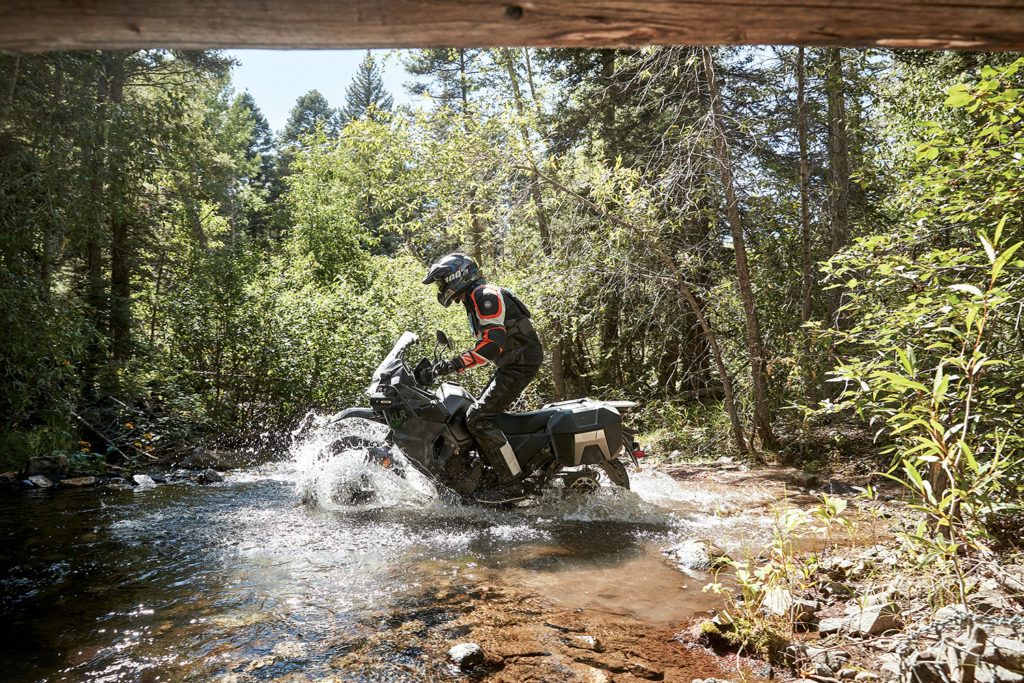
I admire Kawasaki’s stubborn refusal to make more than the necessary enhancements to the KLR650. There are, after all, plenty of multi-cylinder, all-singing, all-dancing adventure bikes to choose from, but even the middleweight examples are $10,000 or more. The KLR650 Adventure model I tested, with auxiliary lights and saddlebags, costs just $7,699. Adding ABS raises the price to one dollar shy of $8,000.
The Kawasaki KLR650 is the rescue mutt of the dual-sport motorcycle world. No, it’s not perfect, but you’ll end up falling in love with it, and you know it will be a dependable, loyal, eager companion on any adventure, and for a lot less money than fancy breeds.
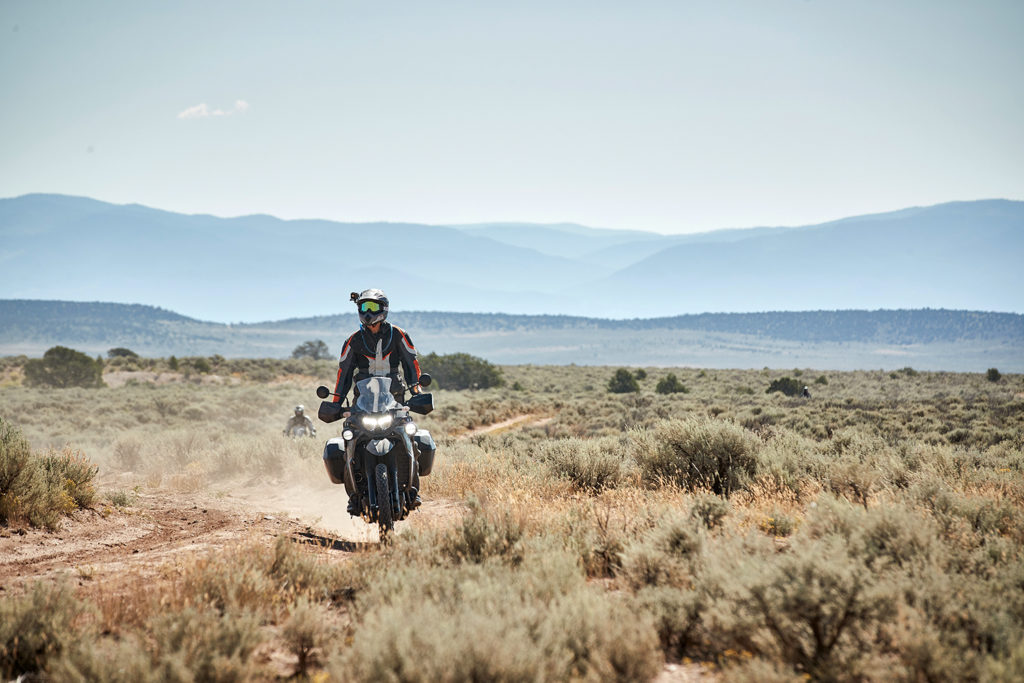
2022 Kawasaki KLR650 Specs
Base Price: $6,699
Price as Tested: $7,699 (Adventure model)
Warranty: 1 yr., unltd. miles
Website: kawasaki.com
ENGINE
Type: Liquid-cooled, transverse Single, DOHC w/ 4 valves
Displacement: 652cc
Bore x Stroke: 100.0 x 83.0mm
Compression Ratio: 9.8:1
Valve Insp. Interval: 15,000 miles
Fuel Delivery: DFI w/ 40mm throttle body
Lubrication System: Wet sump, 2.2 qt. cap.
Transmission: 5-speed, cable-actuated wet clutch
Final Drive: O-ring chain
CHASSIS
Frame: Tubular-steel semi-double cradle, steel swingarm
Wheelbase: 60.6 in.
Rake/Trail: 30 degrees/4.8 in.
Seat Height: 34.3 in.
Suspension, Front: 41mm fork, no adj., 7.9 in. travel
Rear: Single shock, adj. rebound & spring preload, 7.3 in. travel
Brakes, Front: Single 300mm disc w/ 2-piston caliper
Rear: Single 240mm disc w/ 1-piston caliper
Wheels, Front: Spoked aluminum, 1.60 x 21 in.
Rear: Spoked aluminum, 2.50 x 17 in.
Tires, Front: 90/90-21, tube-type
Rear: 130/80-17, tube-type
Wet Weight: 487 lbs. (as tested)
Load Capacity: 316 lbs. (as tested)
GVWR: 803 lbs.
PERFORMANCE
Horsepower: 36.5 hp @ 6,100 rpm (rear-wheel dyno)
Torque: 35.2 lb-ft @ 4,600 rpm (rear-wheel dyno)
Fuel Capacity: 6.1 gals.
Fuel Consumption: 47 mpg
Estimated Range: 287 miles
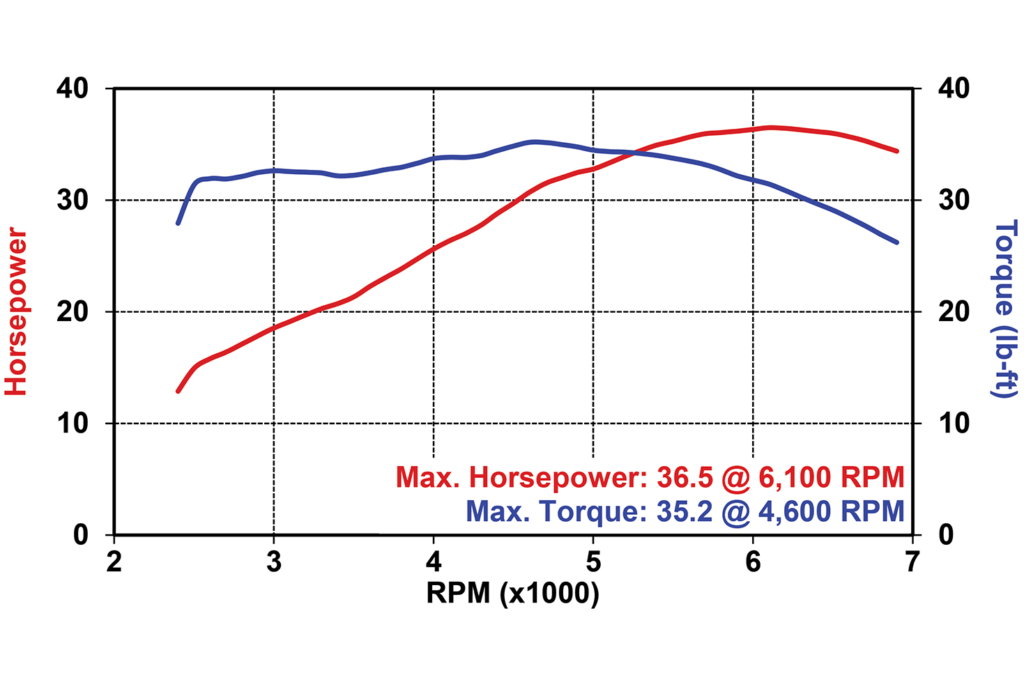
The post 2022 Kawasaki KLR650 Adventure | Road Test Review first appeared on Rider Magazine.
Source: RiderMagazine.com
